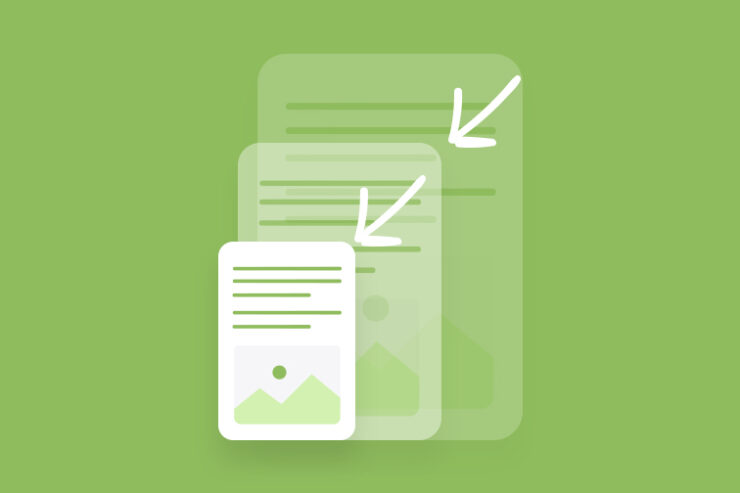Image compression helps reduce the size of images to save storage space on your computer and to help improve website performance. It can also help boost your SEO ranking, because search engines favor faster websites. Lossless compression rewrites the data of an image file to reduce its size without losing quality. It’s best used when image quality is more important than storage space or bandwidth.
Compressing images

Whether you need to compress images for web use or to save on storage space, this tool is easy to use and can reduce image file size without compromising quality. It uses a combination of lossless compression algorithms to make your photos smaller without losing any details. This way, you can enjoy fast load times and better user experience on your website.
The first thing to do when compressing an image is to decide what level of quality you want. You can select from a range of settings that vary from low to high quality, depending on your needs and preferences. For example, if you’re using the image for a website, you might choose to save it in JPEG format, which is easily compressed by most online image compressors. If you’re saving it for print, however, you might prefer to use a higher-quality setting that results in a larger file size.
This image compression app also lets you set a target file size, which is the maximum byte count you want your image to be saved at. This is especially helpful if you’re uploading large photos to your site and want them to be as small as possible. Lastly, you can select a folder where you want your compressed files to be saved. This tool is free to use and doesn’t require any installation or sign up.
Optimising images

Image compression is a process that reduces an image’s file size without degrading its quality. This allows for more images to be stored on a device or computer, and reduces network bandwidth when they are transferred over the Internet. It is also useful when transferring images between different formats. There are two main types of image compression: lossy and lossless.
The first step is to find an image compression tool that meets your needs. There are several options out there, both free and paid. One of the most popular is Tiny PNG, a browser-based image optimization tool that works with JPEG and PNG files. It uses smart lossy compression to reduce file size, removing empty or duplicated pixels. There are also several programs and apps available for PCs, Macs, and smartphones that can compress images.
Optimising your images will make them faster to load on websites and in email. This is important for ensuring a positive user experience, as slow loading times can cause users to navigate away from your site. It will also help save space on your device if you have lots of images on it. Depending on the file size, some of these tools will allow you to choose a specific compression percentage. Others will use the LZ77 and Deflate algorithms to compress the file. These methods are effective because they identify repeated patterns and replace them with smaller references, while retaining the same level of quality.
Saving space

If you use a lot of digital images on your business website or in your e-mails, you’ll want to save space as much as possible. Large image files can take up a lot of storage space on computers and cellphones, slowing down loading times for customers. They can also make your business look unprofessional and sloppy. It’s important to compress your images before uploading them to the web to reduce their size.
Image compression is the process of reducing an image’s file size without losing any critical data. This technique works by removing redundant information in the image, like colors and pixels. For example, imagine a photo of a dog staring at a computer screen. The dog’s fur and the screen have many of the same colors, so the software can compress them by deleting some of that information.
The result is an image that takes up less space, but still looks similar to the original. This type of image compression is referred to as lossless, and it’s ideal for situations where every detail counts.
There are numerous software programs and online facilities that offer image compression services. The advantage of using an online image compressor is that it’s simple to use and requires no download. Some of these services also support both lossy and lossless image compression.
Optimizing images for the web
Using image compression on images is a great way to save space and reduce loading times. This can be done with programs or online tools that reduce the size of an image without affecting its quality. There are also plugins available for WordPress sites that will automatically optimize images for the web. These tools can also resize images and include the appropriate alt text.
There are two types of image compression: lossless and lossy. Lossless compression removes empty, redundant or duplicated bits from an image to make it smaller without sacrificing quality. This method is ideal when you want to keep your images as close to their original state as possible.
In contrast, lossy compression is a more aggressive approach to image reduction. It uses algorithms that remove unnecessary data from an image, such as GPS information, camera settings, color profiles, descriptions and more. The resulting images are still usable, but they will be slightly larger than the originals.
In addition to reducing website load times, image optimization will improve your site’s search engine ranking. This is because Google favors websites that are faster to load and provide a better user experience. There are many ways to optimize an image for the web, but the best choice is a software program that can compress multiple files in bulk.

